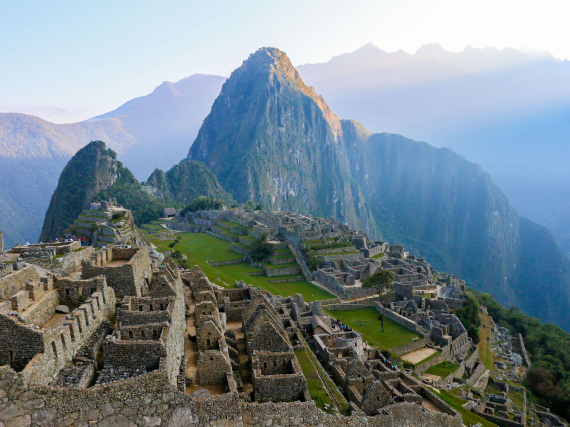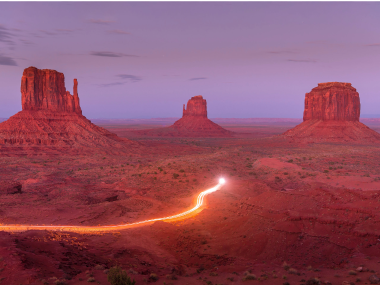With 63 incredible parks to choose from, the U.S. National Park System offers a wide range of beautiful protected lands to explore. If you’re anything like us, you dream of one day visiting every single park in the country. Such a lofty goal is best achieved when you’re able to bag at least three (or four or five) national parks in a single trip. So, grab your national park pass and head to these seven states that have the most national parks.
Washington
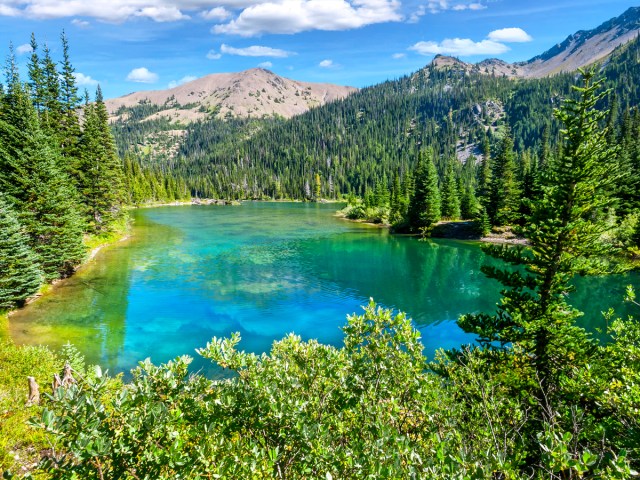
Number of national parks: 3
Washington state’s three national parks each offer a unique perspective into the sublime beauty of the Pacific Northwest. The first national park in the state (and the fifth in the country) was Mount Rainier National Park, established in 1899. In addition to its namesake 14,410-foot stratovolcano, the park is home to numerous glaciers, hiking trails, forests, and meadows to explore.
Along the coast of Washington, Olympic National Park is known for its incredible biodiversity, with access to beaches, mountains, and the Hoh Rainforest — one of the quietest places on Earth. Farther east, North Cascades National Park is somewhat of a hidden gem, with uncrowded trails for backpackers, alpine lakes, and larch trees that turn a glorious golden shade in the fall.
Florida

Number of national parks: 3
Florida is home to Everglades National Park, the largest subtropical wilderness in the country and an important habitat for endangered species such as manatees and American crocodiles. This massive network of waterways is best explored by airboat, which carries travelers through mangrove forests, sawgrass prairies, and wild swamps.
Dry Tortugas National Park offers a more tropical experience, although it is accessible only by boat or seaplane. The small archipelago about 70 miles west of Key West is surrounded by turquoise waters and is famous for Fort Jefferson, a former military fortress from the 1800s (it remains the largest brick masonry structure in the Americas). Finally, Biscayne Bay National Park is close to Miami, making it a popular option for snorkelers and divers, who can explore old shipwrecks on the Maritime Heritage Trail.
Arizona
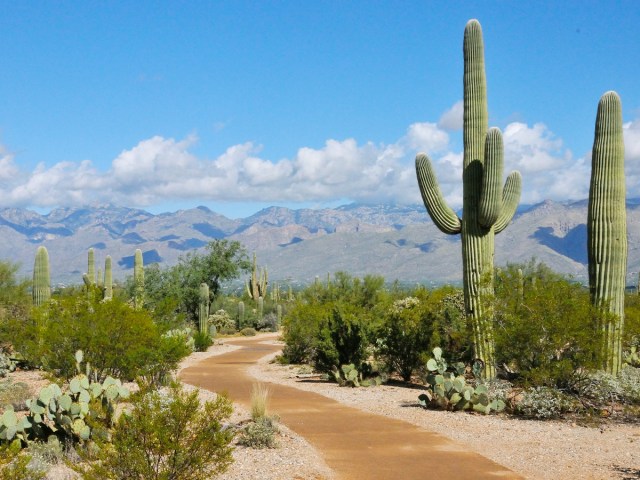
Number of national parks: 3
Grand Canyon National Park is on seemingly everybody’s bucket list, so it’s no surprise that it’s the most popular national park in Arizona. The massive canyon was carved by the Colorado River over millions of years, resulting in a natural phenomenon that is, quite literally, breathtaking.
However, Arizona has two more national parks that we don’t think are talked about nearly enough. Petrified Forest National Park is another example of the astounding nature of time, with trees that are so old, they actually turned into fossils. The park is also home to centuries-old petroglyphs and unique rock formations, including the Painted Desert, a surreal landscape of pink, blue, and purple badlands.
In southern Arizona, Saguaro National Park was established in 1933 to protect the saguaro cactus and its surrounding desert environment. The cactus grows only in the Sonoran Desert and blooms prolific white blossoms in the spring.
Colorado
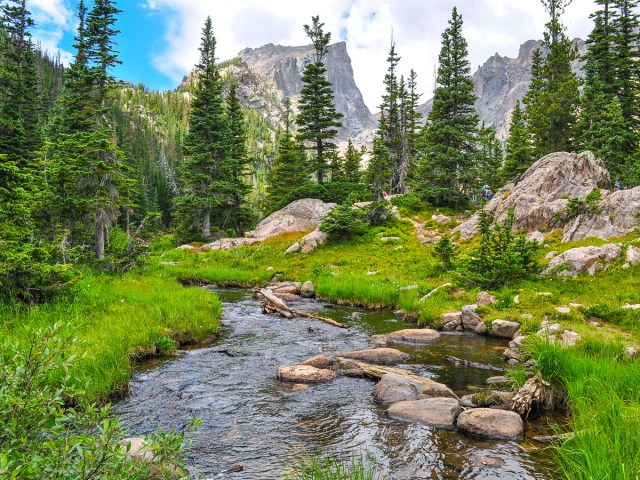
Number of national parks: 4
Colorado has four national parks, and no two are alike. Rocky Mountain National Park allows visitors to experience the majestic Rockies up close, with gorgeous alpine scenery, hundreds of miles of trails, and Trail Ridge Road, the highest continuous paved road in North America. Great Sand Dune National Park offers mountains of a different nature — giant sand dunes that are so tall, visitors can sandboard or sled down them (including the tallest sand dune in North America).
Lesser-visited Black Canyon of the Gunnison National Park is home to one of the narrowest canyons in the country, making it ideal for adventurous rock climbers or anyone seeking a scenic drive. Farther south, Mesa Verde National Park contains the fascinating cliff dwellings of the Ancestral Puebloans, who lived in the region thousands of years ago.
Utah
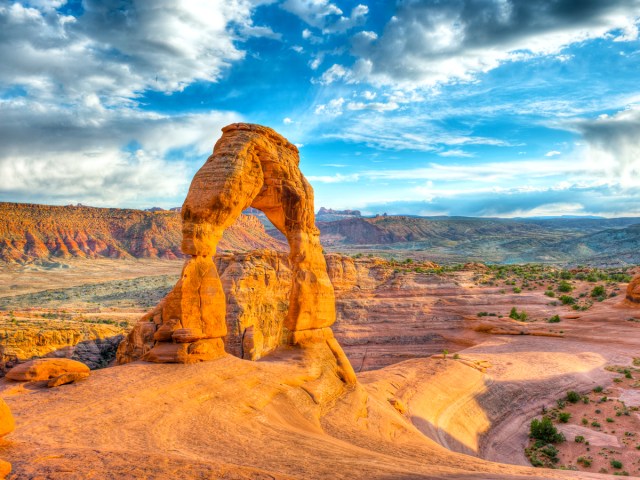
Number of national parks: 5
Nicknamed the “Mighty Five,” Utah’s five national parks are an epic excuse for a road trip. First, head to Arches National Park, home to approximately 2,000 natural arches, including the famous 52-foot-tall Delicate Arch depicted on the state license plate. From there, it’s a short drive to Canyonlands National Park, which is typically less busy than Arches but no less impressive.
Next, you can drive about 2.5 hours to Capitol Reef National Park, where you can see a geological monocline, a steep fold in otherwise horizontal rock layers that’s also known as a “wrinkle on Earth.” Another 2.5-hour drive will take you to Bryce Canyon National Park, home of the hoodoos — otherworldly, tall, thin rock spires that have formed over years of erosion. All that’s left is a short 1.5-hour drive to Zion National Park, where you can hike through the Narrows, a famous slot canyon best seen in the spring when the flowers bloom.
Alaska

Number of national parks: 8
Given that Alaska is nicknamed the “Last Frontier,” it’s probably not surprising that it’s the state with the second-highest number of national parks. Two of the most-visited parks in Alaska are Denali National Park and Glacier Bay National Park. The former is home to North America’s tallest peak, while the latter is an ideal place to see massive glaciers up close.
If you’re looking to avoid crowds, Wrangell-St. Elias National Park is among the least-visited national parks in the country, while Lake Clark National Park is accessible only by small plane and Gates of the Arctic National Park is virtually untouched, thanks to the fact that it has zero roads.
For wildlife spotting, Katmai National Park draws bears for the annual salmon runs, Kenai Fjords National Park is known for humpback whales, and Kobuk Valley National Park is the site of an annual caribou migration.
California

Number of national parks: 9
California has the most national parks of any state in the country. The Golden State’s showstopper is undoubtedly Yosemite National Park, established in 1890 as the country’s third national park and known for its dramatic granite cliffs, including the Half Dome and El Capitan. Redwood National and State Parks and Sequoia National Park, home to the tallest trees on Earth, are other beloved favorites.
For more one-of-a-kind landscapes, head to Joshua Tree National Park, Death Valley National Park, and Lassen Volcanic National Park to see twisted trees, expansive salt flats, and bubbling geothermal springs. Meanwhile, Pinnacles National Park showcases a stunning mix of rock spires and wildflowers, and Kings Canyon National Park is a draw for rugged backpackers in the Sierra Nevadas.
Lastly, the state’s least-visited park, Channel Islands National Park, provides phenomenal kayaking opportunities and a chance to spot sea lions and other marine wildlife.
More from our network
Daily Passport is part of Inbox Studio, which publishes content that uplifts, informs, and inspires.

